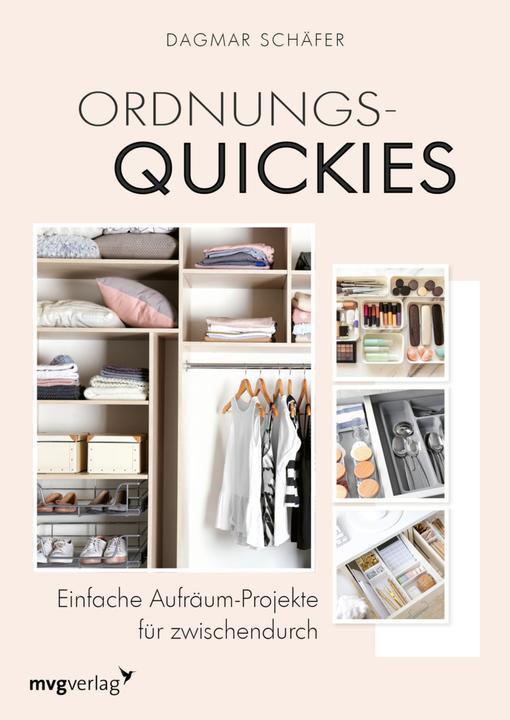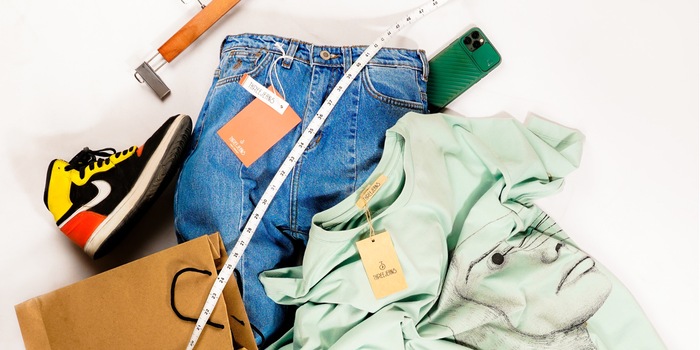

Sorting things out with a professional organiser
I rang up Dagmar Schäfer from «Ordnungswunder» and talked to her about emotional attachments to items of clothing, bad buys and professional decluttering.
We’re all familiar with the classic cliché – you’ve got a full closet yet nothing to wear. But professional organiser and coach Dagmar Schäfer knows that this is, in fact, neither a cliché nor a surprise. From experience, she’s observed that we usually only really like and wear one fifth of our clothes.
I wanted to know from her why we apparently miss the mark so often when shopping, how to finally get rid of all the superfluous junk and how we can go about buying only things that make us happy.
Dagmar, do you know how many pieces of clothing you own?
I did indeed count them recently. I own about 100. Just a few years ago, however, the figure was around five times as high. Until I did a radical declutter. Now, I really do wear all of the 100 pieces left. For each season, I put together little capsule collections from them, which I hang on a separate clothes rail. Once I’m through with it, the selection goes back into the closet and a new one hits the rack.
At 100 pieces, you’re below the Swiss average. It lies at 118, of which only about 40 per cent are worn. Why do you think we want to own so many things?
From my experience, only 20 per cent are actually worn. On the one hand, this is certainly due to an overabundance of options. Temptation lurks around every corner. New collections are constantly coming out and social media is selling us inspiration non-stop. It tricks us into thinking, «I need that too.» Or we may like something we’ve seen on our friends or acquaintances, forgetting that it doesn’t match our own style at all. And so, we buy and buy and buy. Fast fashion has made this possible.
You’re saying a kind of distorted perception is partly to blame?
Yes. Far too often, we buy things that have one or more «buts». And those are exactly the pieces that end up being prisoners in our closet.
Is all this superfluous stuff, be it said clothes, or even things like deco items and furniture, also emotional baggage?
I would say so, absolutely. Time and again, I see how people feel once all this baggage is finally gone. It also doesn’t help to banish things to a box and hide them at the very back of the closet or in the basement. Subconsciously, we know the burden is still there. What’s more, you make life difficult for yourself by having too much clobber. It makes cleaning time-consuming, you get lost in the chaos and can’t find anything right when you need it ...
So, there’s no room for so-called creative chaos as far as you’re concerned?
Chaos is fine; it hits all of us at one point or another. The only thing that matters is that you get rid of it after and bring order back.
How do I best approach organising without feeling overwhelmed in the process? That’s what your book «Ordnungs-Quickies» (Engl.: Organisation Hacks) is about.
My mantra is to take baby steps. If you go through with them regularly, you’ll progress quickly without getting overwhelmed. I recommend writing down the areas in your life that need to be organised and sorting them by urgency. After that, it’s time to stubbornly work through it – I’m talking 15 to 30 minutes per day, no more. This allows you to easily integrate decluttering into your daily routine without running the risk of reaching decision fatigue and losing motivation.

I love working through lists. It’s so satisfying.
Well, there you have it.
And in the cases where you’ve really got to get down to the nitty-gritty, do you have a recipe for professional decluttering?
I do. It’s made up of three stages: why you want to declutter and what’s your goal, followed by reducing and organising.
Does the famous Marie Kondo question, «Does it spark joy?» ever occur when reducing?
To be honest, I find that phrase a bit too abstract. More likely to come up are questions like, «Do I use this?», «Do I like this?» and «Do I need this?» as well as, «Would I buy this again?»
You must also have had some really difficult cases, right? Personally, I can’t part with my favourite pair of jeans, even though they’ve got a huge tear and it’s been ages since I’ve been able to wear them. What advice would you give in a situation like that?
Having an emotional attachment to objects or clothing is common. The important part is that the feeling associated with the item is a positive one. Clinging to something negative won’t help anyone. If you're not ready to let go of the positive associations with the item in question, it often helps to tell yourself you're not parting with the memory itself, but only with something material. What you can also do is take a photo of your favourite piece. That way, you’ll be able to look at it again and again if you need to.
How do you go about Stage 3, organising?
I go totally by the individual’s needs. Things like their day-to-day life and the size of their apartment or closet play a role. The end result should be practical and facilitate their everyday.
What effect does it have on someone to part with the things they don’t need and have everything organised?
It’s really liberating! I know it from my own experience and love seeing that it in others as well – the relief, the overview, the motivation to also maintain order.
So, you don’t immediately fall back into old patterns of chaos?
In most cases, you really don’t. Once you’re aware of all the benefits and notice how your everyday has changed for the better, you’ll be motivated to maintain this state.
Do you still have a tip in case the desire to shop hits again?
Take your time when deciding what to buy and ask yourself honestly, «Do I really like everything(!) about this item?» As I said before, it makes no sense to buy something that has one or more buts. Colour, fabric, cut, feel, pairing possibilities – all these need to be on point.
What do you think of the «1 in, 1 out» method? That, is for every new piece of clothing bought, you need to get rid of an old one?
I think you can use this to end up cheating yourself – and that you’ll quickly find yourself tempted to buy things that don’t meet all your criteria. Besides, if you’ve really decluttered your closet, you’ll only own pieces you really do like and wear. It would be a shame to be forced to get rid of those.
Given your perfectly equipped wardrobe and strict criteria, what moves you to make new purchases? And above all, how often?
I’d say that I’ll buy something about ten times a year. That may be because a piece looks worn or damaged and I need a replacement. Or, because I saw something that meets all my criteria and would make a good addition to my capsule wardrobe. And then I go for quality, which you can suddenly afford when making purchases so rarely.
What’s your final piece of advice to anyone now ripping open their closet doors in a frenzy to get decluttering?
My advice is to start by picking out the few pieces that you like and wear regularly. Once you have them in front of you, you can quickly analyse which cuts, colours and materials you feel comfortable in. With this in mind, you can start sorting out the rest of your closet.
Thank you very much.
Since childhood, Dagmar Schäfer’s heart has been beating for all things beautiful, structured and well sorted. She’s been living in Zurich since 2008 and works here (in addition to her profession as a veterinarian) as a decluttering coach and professional organiser. For further interesting facts and contact information, visit ordnungswunder.ch (website in German).
Header image: Alireza Khatami via Unsplash
Always in the mood for good hits, great trips and clinking drinks.
Practical solutions for everyday problems with technology, household hacks and much more.
Show all

